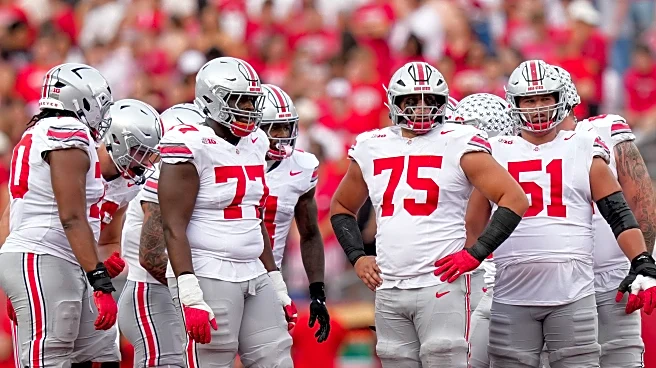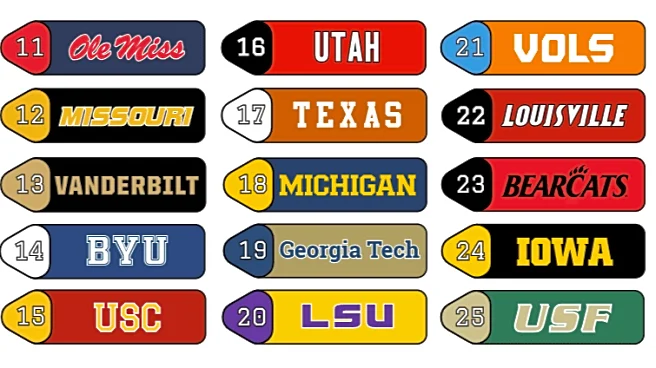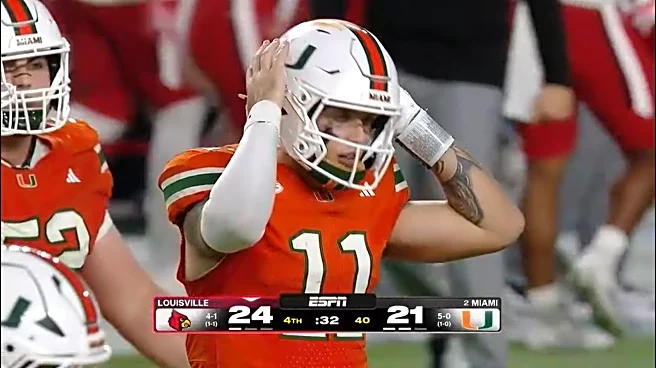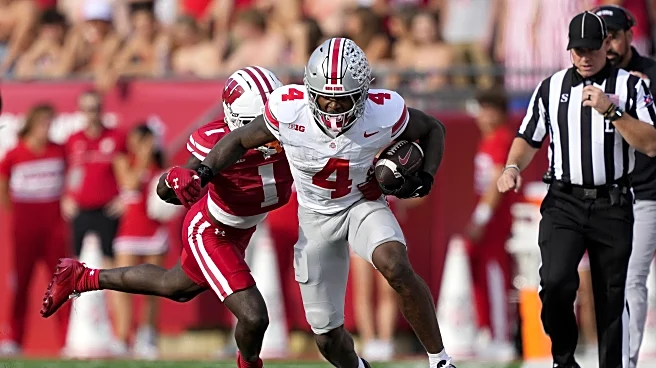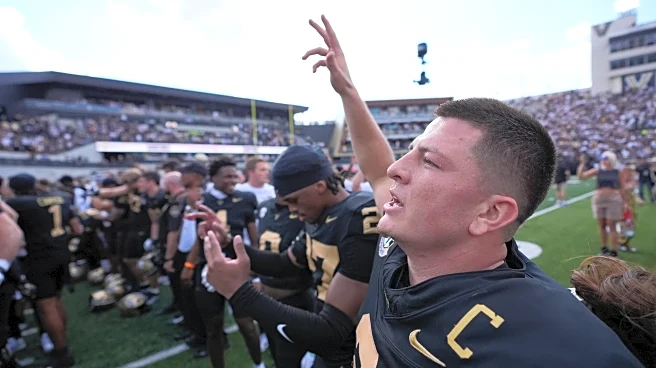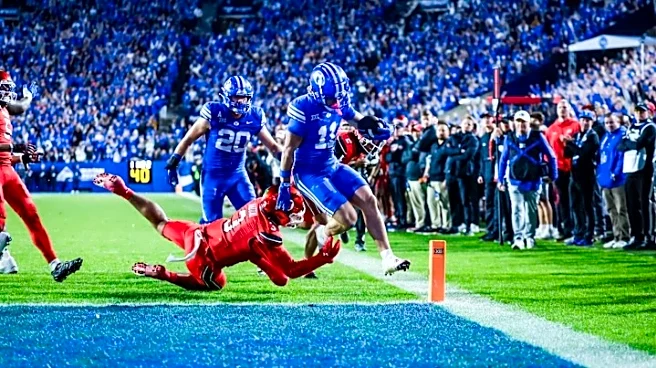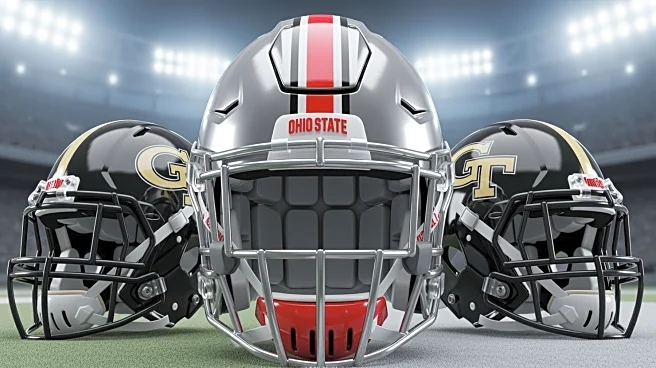Ohio State’s resume at the midseason mark is one that invites an uncomfortable question for every contender: Who exactly can beat this team?
The Buckeyes sit unbeaten, have a top-ranked defense that routinely
removes opponents’ margin for error, and a passing game led by Julian Sayin that has taken a clear leap into elite territory.
Put another way: Ohio State doesn’t merely excel in one phase, it has top-end performance on both sides of the ball, the special-teams margin is tolerable, and the roster construction gives depth where it matters.
Those three elements together are why, right now, the Buckeyes look like the most complete team in college football.

The baseline: Dominance across the box score
Through Week 8 Ohio State improved to 7–0 and remained No. 1 in the major polls, and the basic numbers underline a rare balance.
Julian Sayin has thrown for north of 1,800 yards with a 19:3 TD-INT ratio and an elite QBR after seven games, a combination of efficiency and explosion that fuels Ohio State’s offense.
More striking is the defense, OSU sits among the national leaders in total defense (yards allowed per game) and has pushed its stop-rate into the top tier after the shutout of Wisconsin, a unit that consistently converts opponent drives into field goals or punts rather than touchdowns.
Those are not isolated flashes, they’re repeatable, from opponent to opponent.
Why the two-phase equilibrium matters
Championship teams don’t just outscore lesser opponents, they control variance. Offenses can have off days, quarterbacks can throw two-interception games, and special teams can lose the field-position battle.
What separates an elite team is how often the other three phases can bail the unit out. Ohio State’s defense has been that safety net in 2025, when the offense has grown conservative, and it has, at times, the defense has tightened and forced low expected-point outcomes for opponents.
Conversely, when the offense is rolling (see Sayin’s multiple recent big-game outings), the defense can play with better leverage and rush fewer gambles. That feedback loop, offense easing pressure on defense and defense allowing the offense to be aggressive, is the textbook definition of balance.
Personnel + coaching: Why this looks repeatable
There’s a personnel reason and a coaching reason this isn’t a one-off.
Personnel: Ohio State’s roster construction prioritizes depth at line play, rotation up front on both sides, multi-phase linebackers (who can rush and cover) and a receiver room with multiple true threats. That lets Ryan Day, Brian Hartline and Matt Patricia call different games each week without being forced into a single identity.
Coaching: Patricia’s NFL-informed structures and the staff’s ability to schematize pressure while retaining coverage integrity have translated into fewer explosive plays allowed. Offensively, Sayin and a staff that trusts pro-style timing concepts have created consistent, repeatable reads that lead to high-value chunk plays.
The result is schematic variety backed by players who can execute it.

How Ohio State stacks up against other elite resumes
Looking nationally, there are reasons to respect programs like Indiana (hot and unbeaten in the league), Texas A&M (balanced, physical SEC contender) and Georgia (perennial defensive benchmark).
Indiana’s surge is real and gives the Big Ten an extra heavyweight, Texas A&M’s defense and power-running posture present a different matchup test and Georgia remains an organizational model for defensive play. But where those teams lean heavily on one identity, Indiana’s offensive balance and tempo, A&M’s power front, Georgia’s trench dominance.
Ohio State’s uniqueness is in the synthesis, elite defense and an offense capable of explosive vertical strikes and efficient short-to-intermediate work. That duality makes game planning for the Buckeyes harder because opponents can’t over-load to stop a single strength without opening a different avenue of attack.
The risks still on the table
No team is invulnerable. Ohio State’s run game remains a work in progress at times, and protection lapses on the right side of the line have shown up in film study, vulnerabilities that high-end opponents will try to exploit.
Special teams, historically a swing factor, has had moments that require attention. And depth, while a strength, can be tested in the long Big Ten grind if injuries pile up.
Those are manageable risks, but they are real and the Buckeyes will have to defend against complacency and polish situational play (third-down, red-zone) to sustain this pace.
The practical bottom line
At midseason, the most useful way to grade a contender is this: Can the team win the way champions do, by dominating a majority of the game’s critical phases and minimizing variance?
Ohio State checks those boxes right now. It has a defense that consistently shrinks opponents’ upside, an offense with a bona fide top-tier QB in Julian Sayin, and a coaching staff that can present multiple looks and adjust weekly.
Put another way, the Buckeyes are built to withstand the randomness of a long season and to win both the close games and the blowouts. That is precisely what separates pretenders from contenders.
If Ohio State continues to posture like this, limit big plays, convert high-leverage third downs, protect Sayin enough to keep the offense firing, it won’t just be in the playoff conversation. It will be the team everyone else is chasing.
